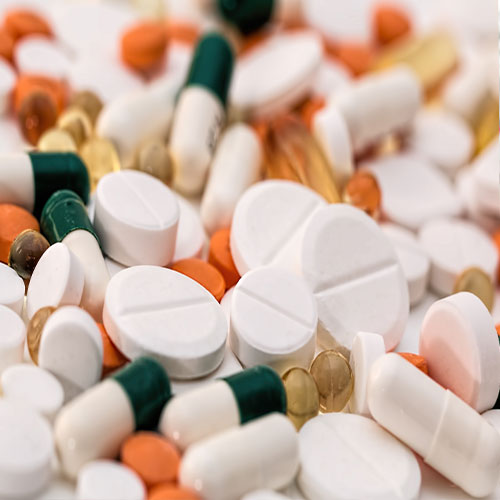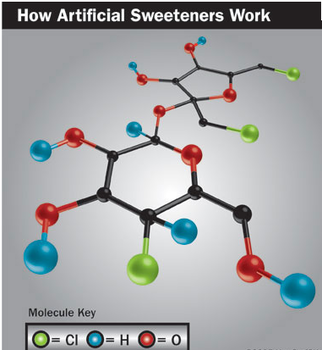







Acids
Food acids are added to make flavors "sharper", and also act as preservatives and antioxidants. Common food acids include vinegar, citric acid, tartaric acid, malic acid, fumaric acid, and lactic acid.

Acidity regulators
Acidity regulators are used to change or otherwise control the acidity and alkalinity of foods.

Anticaking agents - Diluents
Anticaking agents keep powders such as milk powder from caking or sticking.

Antifoaming agents
Antifoaming agents reduce or prevent foaming in foods.

Antioxidants
Antioxidants such as vitamin C act as preservatives by inhibiting the effects of oxygen on food, and can be beneficial to health.

Bulking agents
Bulking agents such as starch are additives that increase the bulk of a food without affecting its nutritional value.

Food Coloring
Added to food to replace colors lost during preparation, or to make food look more attractive.

Color retention agents
In contrast to colorings, color retention agents are used to preserve a food's existing color.

Emulsifiers
Allow water and oils to remain mixed together in an emulsion, as in mayonnaise, ice cream, and homogenized milk.

Flavors
Are additives that give food a particular taste or smell, and may be derived from natural ingredients or created artificially.

Flavor enhancers
Flavor enhancers enhance a food's existing flavors. They may be extracted from natural sources (through distillation, solvent extraction, maceration, among other methods) or created artificially. Flour treatment agents are added to flour to improve its color or its use in baking.

Glazing agents
Provide a shiny appearance or protective coating to foods.

Humectants
Prevent foods from drying out.

Tracer gas
Tracer gas allow for package integrity testing to prevent foods from being exposed to atmosphere, thus guaranteeing shelf life.

Preservatives
Prevent or inhibit spoilage of food due to fungi, bacteria and other microorganisms.

Stabilizers
Stabilizers,thickeners and gelling agents, like agar or pectin (used in jam for example) give foods a firmer texture. While they are not true emulsifiers, they help to stabilize emulsions.

Sweeteners
Sweeteners are added to foods for flavoring. Sweeteners other than sugar are added to keep the food energy (calories) low, or because they have beneficial effects for diabetes mellitus and tooth decay and diarrhea.


Sweeteners
E CODING OF ADDITIVES
What are E-numbers?
E CODING OF ADDITIVES
Dangerous Food Additives - AVOID !!!
Hyperactivity (H) – Asthma (A) – Cancer (C)
102 & E102 Tartrazine (food color) H A C
104 & E104 Quinoline Yellow (food color) H A C
107 & E107 Yellow 2G (food color) H A C
110 & E110 Sunset Yellow (Yellow food color #6) H A C
120 & E120 Carmines, Cochineal (food color) H A –
122 & E122 Azorubine, Carmoisine (food color) H A C
123 & E123 Amaranth (Red food color #2) H A C
124 & E124 Ponceau, Brilliant Scarlet (food color) H A C
127 & E127 Erythrosine (Red food color #2) H A C E128 Red 2G (Red food color) H A C
129 & E129 Allura Red AC (food color) H A C E131 Patent Blue (food color) H A C
132 & E132 Indigotine, Indigo Carmine (food color) H A C
133 & E133 Brilliant Blue (food color) H A C
142 & E142 Acid Brilliant Green, Green S, Food Green (food color) H A –
143 Fast Green (food color) – A –
150 & E150 Caramel (food color) H – –
151 & E151 Activated Vegetable Carbons, Brilliant Black (food color) H A C
154 Food Brown, Kipper Brown, Brown FK (food color) H A C
155 & E155 Chocolate Brown HT, Brown HT (food color) H A C
160b & E160b Bixin, Norbixin, Annatto Extracts (yellow, red to brown natural colors) H A – E173 Aluminium (preservatives) – – C
E180 Latol Rubine, Pigment Rubine (preservatives) H A C
200 &
E200-203 Potassium & Calcium Sorbates ,Sorbic Acid (preservatives) H A –
210 & E210 Benzoic Acid (preservatives) H A C
211 & E211 Sodium Benzoate (preservatives) H A –
212 & E212 Potassium Benzoate (preservatives) – A –
213 & E213 Calcium Benzoate (preservatives) – A –
E214 Ethyl Para Hydroxybenzonate (preservatives) – A –
E215 Sodium Ethyl Para Hydroxybenzonate (preservatives) – A –
216 & E216 Propyl P Hydroxybenzonate, Propylparaben (preservatives) – A – E217 Sodium Propyl P Hydroxybenzonate (preservatives) – A –
220 & E220 Sulphur Dioxide (preservatives) H A –
221 & E221 Sodium Sulphite (preservatives) – A –
222 Sodium Bisulphite (preservatives) – A –
223 & E223 Sodium Metabisulphite (preservatives) – A –
224 & E224 Potassium Metabisulfite (preservatives) – A –
225 & E225 Potassium Sulfite (preservatives) – A – E226 Calcium Sulphite (preservatives) – A –
E227 Calcium Hydrogen Sulphite (preservatives) – A –
E228 Potassium Bisulphite, Potassium Hydrogen Sulphite (preservatives) H A – E230 Diphenyl, Biphenyl (preservatives) – – C
E231 Orthophenyl Phenol (preservatives) – – C E236 Formic Acid (preservative) – – C
E239 Hexamine, Hexamethylene Tetramine (preservatives) – – C
249 & E249 Potassium Nitrate (preservative) – A C
250 & E250 Sodium Nitrite (preservative) H A C
251 & E251 Sodium Nitrate (preservative) H – C
252 & E252 Potassium Nitrate (preservative) H – C
260 & E260 Acetic Acid, Glacial (preservatives) – A –
280 to 283 Calcium or Potassium or Sodium Propionates, Propionic Acid (preservatives) H A
310 & E310 Propyl Gallate (Synthetic Antioxidant) – A C
311 & E311 Octyl Gallate (Synthetic Antioxidant) – A –
312 & E312 Dodecyl Gallate (Synthetic Antioxidant) – A –
319 & E319 TBHQ, Tert Butylhydroquinone (Synthetic Antioxidants) H A –
320 & E320 Butylated Hydroxyanisole (BHA) (Synthetic Antioxidants) H A C
321 & E321 Butylated Hydroxytoluene (BHT) or Butylhydroxytoluene (Synthetic Antioxidants) H A C
407 & E407 Carrageenan (Thickening & Stabilizing Agent) – A C
413 & E413 Tragacanth (thickener & Emulsifier) – A –
414 & E414 Acacia Gum (Food Stabilizer) – A –
416 Karaya Gum (Laxative, Food Thickener & Emulsifier) – A –
421 & E421 Mannitol (Artificial Sweetener) H – –
430 Polyxyethylene Stearate (Emulsifier) – – C
431 Polyxyl Stearate (Emulsifier) – – C
E432 – E435 Polyoxyethylene Sorbitan Monostearate (Emulsifiers Gelling Stabilisers
Thickeners Agents) – – C
433 – 436 Polysorbate (Emulsifiers) – – C
441 & E441 Gelatine (Food Gelling Agent) – A –
466 Sodium CarboxyMethyl Cellulose – – C
507 & E507 Hydrochloric Acid (Hydrolyzing Enhancer & Gelatin Production) – – C
518 & E518 Magnesium Sulphate (Tofu Coagulant) – – C
536 & E536 Potassium Ferrocyanide (Anti Caking Agent) – A –
553 & E553 & E553b Talc (Anti Caking, Filling, Softener, Agent) – – C
620 – 625 MSG Monosodium Glutamate, Glutamic Acid, all Glutamates (Flavour Enhancers) H A C
627 & E627 Disodium Guanylate (Flavour Enhancers) H A –
631 & E631 Disodium Inosinate 5 (Flavour Enhancers) – A –
635 & E635 Disodium Ribonucleotides 5 (Flavour Enhancers) – A –
903 & E903 Camauba Wax (used in Chewing Gums, Coating and Glazing Agents) – – C
905 & 905 a,b,c Paraffin, Vaseline, White Mineral Oil (Solvents, Coating, Glazing, Anti
Foaming, Lubricant Agents in Chewing Gums) – – C
924 & E924 Potassium Bromate (Agent used in Bleaching Flour) – – C
925 & E925 Chlorine (Agent used in Bleaching Flour, Bread Enhancer and Stabiliser) – – C
926 Chlorine Dioxide (Bleaching Flour and Preservative Agent) – – C
928 & E928 Benzoyl Peroxide (Bleaching Flour and Bread enhancer Agent) – A –
950 & E950 Potassium Acesulphame (Sweetener) – – C
951 Aspartame (Sweetener) H A –
952 & E952 Cyclamate and Cyclamic Acid (Sweeteners) – – C



